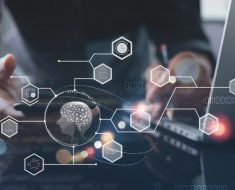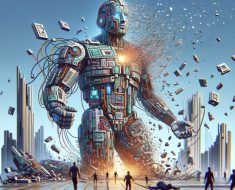The concept of Artificial General Intelligence (AGI) frequently emerges in discussions about the future of technology, but its definition often remains elusive and, arguably, impractical for current use. AGI is theoretically an AI that can perform on par with or exceed human capabilities across a broad spectrum of cognitive tasks. This level of AI, sometimes referred to as strong or full AI, contrasts sharply with task-specific intelligences, such as a programmed chip within a toaster designed for perfect toast production — this being an example of weak AI.
AGI’s definition is muddled by its foundation on human intelligence, which itself lacks a clear, universally accepted definition. Over the years, various tests have been proposed to gauge AGI, such as the Turing Test, which assesses a machine’s ability to exhibit indistinguishable intelligence from humans in conversation. Although this test was reportedly passed in 2014, many experts contend that true AGI has not yet been achieved. Subsequent benchmarks, including the Robot College Test and the Coffee Test, have attempted to set measurable standards for AGI but often shift the goalposts by emphasizing physical capabilities over cognitive ones, integrating robotics with intelligence.
The redefinition of intelligence to include physical tasks such as assembling furniture or making coffee introduces significant complications. For instance, the IKEA test requires a robot to assemble furniture — a task challenging even for some humans, questioning the nature of intelligence itself. Moreover, these benchmarks tend to overlook individuals with disabilities, who, despite physical limitations, demonstrate clear cognitive prowess, thus challenging the physical-centric definitions of AGI.
Rather than focusing solely on replicating human intelligence, there is a stronger case for developing AI technologies that enhance human capabilities and address practical needs. The integration of AI in various job tasks, rather than entire roles, highlights an evolving workforce where the nature of tasks changes significantly even if the overarching job titles do not. This perspective is particularly relevant as AI begins to automate both cognitive and physical tasks, potentially reshaping industries and employment patterns without necessarily achieving AGI.
The pursuit of AGI, whether or not it is fully achievable, will likely be one of the defining movements of the 21st century, with significant economic implications. The focus on AI’s capacity to replace human labor rather than its existential achievements offers a more tangible measure of its impact. Thus, while AGI as a concept remains abstract and somewhat unattainable, the journey towards it and its practical applications could profoundly affect how we work, live, and interact with technology.
In conclusion, AGI remains a concept layered with theoretical and practical complexities. Its definition and the tests designed to measure it often fail to capture the full scope of what intelligence may mean in a technologically integrated future. Nonetheless, the exploration of AGI continues to spur significant technological advancements and discussions that could shape the future of human and machine interaction.
![[2401.10733] Dynamic Q&A of Clinical Documents with Large Language Models [2401.10733] Dynamic Q&A of Clinical Documents with Large Language Models](https://aigumbo.com/wp-content/uploads/2023/12/arxiv-logo-fb-235x190.png)



